Home | Studies | Small Business Administration

Small Business Administration
Frequently Asked Questions
Advocacy: the voice of small business in government
What is a small business?
The Office of Advocacy defines a small business for research purposes as an independent business having fewer than 500 employees.
Firms wishing to be designated small businesses for government programs such as contracting must meet size standards specified by the U.S. Small Business Administration (SBA) Office of Size Standards. These standards vary by industry; see www.sba.gov/size.
How important are small businesses to the U.S. economy?
Small firms:
- Represent 99.7 percent of all employer firms.
- Employ half of all private sector employees.
- Pay more than 45 percent of the total U.S. private payroll.
- Have generated 60 to 80 percent of net new jobs annually over the last decade.
- Create more than 50 percent of nonfarm private gross domestic product (GDP).
- Supplied more than 23 percent of the total value of federal prime contracts in FY 2005.
- Produce 13 to 14 times more patents per employee than large patenting firms. These patents are twice as likely as large firm patents to be among the one percent most cited.
- Are employers of 41 percent of high-tech workers (such as scientists, engineers, and computer workers).
- 53 percent home-based and 3 percent franchises.
- Made up 97 percent of all identified exporters and produced 28.6 percent of the known export value in FY 2004.
Sources: U.S. Bureau of the Census; Advocacy-funded research by Joel Popkin and Company, Jan. 2002 (see www.sba.gov/advo/research/rs211.pdf); Federal Procurement Data System; Advocacy-funded research by CHI Research, Inc., Feb. 2003 (see www.sba.gov/advo/research/rs225.pdf); Bureau of Labor Statistics, Current Population Survey; U.S. Department of Commerce, International Trade Administration.
How many small businesses are there?
In 2005, there were approximately 25.8 million businesses in the United States, according to Office of Advocacy estimates. Census data show that there were 5.8 million firms with employees and 18.6 million without employees in 2003, the most recent year with data. Applying the sole proprietorship growth rates to the nonemployer figures and similar Department of Labor growth rates to the employer figures produces the 25.8 million figure. Small firms with fewer than 500 employees represent 99.9 percent of the 25.8 million businesses (including both employers and nonemployers), as the most recent data show there are nearly 17,000 large businesses.
How do regulations affect small firms?
Very small firms with fewer than 20 employees spend 45 percent more per employee than larger firms to comply with federal regulations.
These very small firms spend 4½ times as much per employee to comply with environmental regulations and 67 percent more per employee on tax compliance than their larger counterparts.
For data broken down by industry, see www.sba.gov/advo/research/rs264tot.pdf.
Cost of Federal Regulations by Firm Size, All Business Sectors (Dollars)
| Type of Regulation | Cost per Employee for Firms with: | |
| <20 Employees | 500+ Employees | |
| All Federal Regulation | $7,647 | $5,282 |
| Environmental | 3,296 | 710 |
| Economic | 2,127 | 2,952 |
| Workplace | 920 | 841 |
| Tax Compliance | 1,304 | 780 |
Source: The Impact of Federal Regulations on Small Firms, an Advocacyfunded study by W. Mark Crain, Sept. 2005 ( see www.sba.gov/advo/research/rs264tot.pdf).
How many businesses open and close each year?
Estimates for businesses with employees indicate there were 671,800 new firms and 544,800 closures (both about 10 percent of the total) in 2005.
Starts and Closures of Employer Firms, 2001-2005
| Category | 2001 | 2002 | 2003 | 2004 | 2005 |
| New Firms | 585,140 | 569,750 | 612,296 | 642,600e | 671,800e |
| Firm Closures | 553,291 | 586,890 | 540,658 | 544,300e | 544,800e |
| Bankruptcies | 40,099 | 38,540 | 35,037 | 34,317 | 39,201 |
e = Estimate. For more information, see Business Estimates from the Office of Advocacy: A Discussion of Methodology, a working paper by Brian Headd, June 2005 (see www.sba.gov/advo/research/rs258tot.pdf).
Sources: U.S. Bureau of the Census; Administrative Office of the U.S. Courts; U.S. Department of Labor, Employment and Training Administration.
How many new jobs do small firms create?
Over the past decade, small business net job creation fluctuated between 60 and 80 percent. In the most recent year with data (2003), employer firms with fewer than 500 employees created 1,990,326 net new jobs, whereas large firms with 500 or more employees shed 994,667 net jobs.
For a more complete look at employment dynamics by firm size from 1989 to 2003, see www.sba.gov/advo/research/data.html#us. Source: U.S. Bureau of the Census.
What is small firms’ share of employment?
The small business share of employment remains around 50 percent. Although small firms generally create 60 to 80 percent of the net new jobs, some firms will become large firms as the new jobs are created. Of 113.4 million nonfarm private sector workers in 2003, small firms with fewer than 500 workers employed 57.4 million and large firms, 56.0 million. Smaller firms with fewer than 100 employees employed 41.0 million.
Source: U.S. Bureau of the Census.
What is the survival rate for new firms?
Two-thirds of new employer establishments survive at least two years, and 44 percent survive at least four years, according to a recent study. These results were similar for different industries. Firms that began in the second quarter of 1998 were tracked for the next 16 quarters to determine their survival rate. Despite conventional wisdom that restaurants fail much more frequently than firms in other industries, leisure and hospitality establishments, which include restaurants, survived at rates only slightly below the average.
Earlier research has explored the reasons for a new business’s survivability. Major factors in a firm’s remaining open include an ample supply of capital, being large enough to have employees, the owner’s education level, and the owner’s reason for starting the firm in the first place, such as freedom for family life or wanting to be one’s boss.
Sources: “Survival and Longevity in the Business Employment Dynamics Database” by Amy E. Knaup, Monthly Labor Review, Volume 128, Number 5 (May 2005), pp. 50-6; “Redefining Business Success: Distinguishing Between Closure and Failure” by Brian Headd, Small Business Economics, Volume 21, Number 1 (August 2003), pp. 51-61.
How are small businesses financed?
Commercial banks are the largest suppliers of debt capital to small firms, supplying more than 80 percent of lending in the credit line market and, except leasing, more than 50 percent in other markets, such as commercial mortgages and vehicle, equipment, and other loans. In June 2004, small business loans outstanding owed to commercial banks amounted to $522 billion. Very large banks with assets of at least $10 billion are making a significant percentage of small loans of less than $100,000.
Shares of the Number and Amount of Small Business Loans by Banks and BHCs by Asset Size, June 2004
| Bank/BHC Asset Size ($) All Banks | All Banks & BHCs | |||
| <500M | 500M-10B | >10B | ||
| Number of Banks/BHCs | 5,706 | 645 | 72 | 6,423 |
| SBLs <$100K | ||||
| Share of Amount | 31.1% | 19.2% | 49.7% | $125.3B |
| Share of Number | 11.0% | 21.5% | 67.5% | 13.6M |
| SBLs $100K-<$1M | ||||
| Share of Amount | 26.8% | 28.2% | 45.0% | $397.0B |
| Share of Number | 27.2% | 28.2% | 44.6% | 1.7M |
| SBLs <$1M | ||||
| Share of Amount | 27.8% | 26.0% | 46.2% | $522.3B |
| Share of Number | 12.8% | 22.3% | 65.0% | 15.3M |
Abbreviations: BHC, bank holding company; SBL, small business loan
Sources: Federal Reserve Board, Survey of Small Business Finances; special tabulations of the June call reports (Consolidated Reports of Condition and Income for U.S. Banks) prepared for the Office of Advocacy by James Kolari, Texas A&M University.
What role do women, minority, and veteran entrepreneurs play in the economy?
- Women-owned 6.5 million businesses that generated $940.8 billion in revenues, employed 7.1 million workers, and had $173.7 billion in payroll in 2002. In addition, another 2.7 million firms are owned equally by both women and men; these firms add another $731.4 billion in revenues and employ another 5.7 million workers.
- Of the 23 million non-farm firms in 2002, 6.8 percent were owned by Hispanic Americans, 5.2 percent by African Americans, 4.8 percent by Asian Americans, 0.9 percent by American Indians or Alaskan Natives, and 0.14 percent by Native Hawaiians or other Pacific Islanders. In 2002, minorities owned 4.1 million firms that generated $694.1 billion in revenues and employed 4.8 million workers.
- Male veterans’ self-employment rates were higher than those of non-veterans from 1979 to 2004. The rate was 13.7 percent in 2003, compared to 12.2 percent for non-veterans.
- According to a study on veteran business ownership, about 22 percent of veterans in the U.S. household population were either purchasing or starting a new business or considering purchasing or starting one in 2004, and almost 72 percent of these new veteran entrepreneurs planned to employ at least one person at the outset of their new venture.
Sources: Final and preliminary data from the 2002 Survey of Business Owners from the U.S. Census Bureau; Advocacy-funded research by Robert Fairlie, Dec. 2004 (see www.sba.gov/advo/research/rs243tot.pdf); Advocacyfunded research by Waldman Associates, Nov. 2004 (see www.sba.gov/advo/ research/rs242.pdf).
What research is there on the cost of health insurance?
According to a National Federation of Independent Business membership survey, the number one small business issue is the cost and availability of insurance. Aspects of insurance that may drive small business concern are premium increases and administrative costs. Advocacy research shows that insurers of small health plans have higher administrative expenses than those that insure larger group plans.
Sources: National Federation of Independent Business; Kaiser Family Foundation; Advocacy-funded research by Rose C. Chu and Gordon R. Trapnell, Jan. 2003 (see www.sba.gov/advo/research/rs224.pdf).
Whom do I contact about regulations?
To submit comments on proposed regulations, send an email to advocacy @ sba.gov or visit Advocacy’s regulatory alerts page at www.sba.gov/advo/laws/law_regalerts.html.
To follow up on regulatory enforcement issues, email ombudsman @ sba.gov.
How can I get more information?
For more detailed information, visit www.sba.gov/advo. Sign up at http://web.sba.gov/list for email delivery of news releases, The Small Business Advocate newsletter, small business research findings and statistics, and regulatory communications.
Office of Advocacy economic research can be found at www.sba.gov/advo/research. Specific points of interest include:
- Firm size data (static/dynamic for the U.S., states, and metropolitan statistical areas): www.sba.gov/advo/research/data.html
- Small firm lending studies (1994-present): www.sba.gov/advo/research/lending.html
- State economic profiles (1998-present): www.sba.gov/advo/research/profiles
- The Small Business Advocate monthly newsletter (2000-present): www.sba.gov/advo/newsletter.html
Direct questions to (202) 205-6533 or advocacy @ sba.gov.
Accreditations
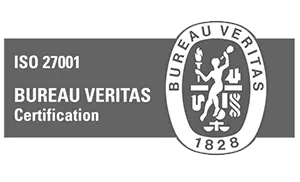


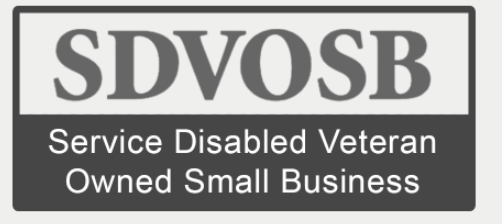
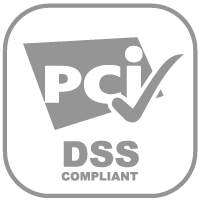
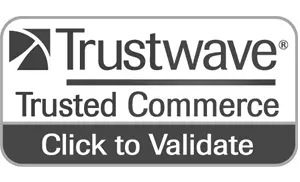
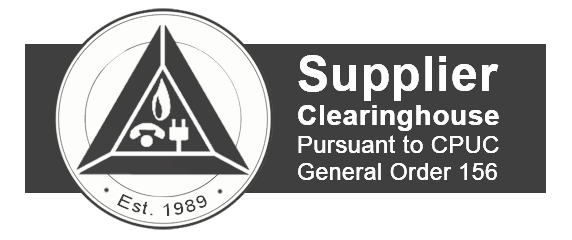
Related Articles
Contact us today for a free 60-min consultation
Thinking about outsourcing? Send us a message for a free 60-min consultation.
We'll read it and set up a call ASAP!
You can also contact our numbers:
Toll Free: 1 800 371 6224
US: +1 650 204 3191
UK: +44 8082 803 175
AU: +61 1800 247 724











